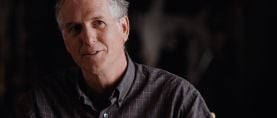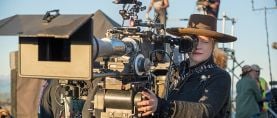
In Memoriam: Bradley B. Six, ASC (1940-2015)
The cinematographer’s credits included the television series Midnight Caller, The A-Team and Trapper John, M.D. He died on June 9 at the age of 74.

Bradley B. Six, ASC, whose credits included the television series Midnight Caller, The A-Team and Trapper John, M.D., died on June 9 at the age of 74.
Six discussed his career with Jon Fauer, ASC, for the independent documentary Cinematographer Style (2006), and most of the following information was culled from the transcript of his interview.
Six was born in Los Angeles on Dec. 8, 1940. His father, Bert, was the head of portrait photography at Warner Bros., and Six began working in the studio’s mailroom in 1958. For the next 18 months, on his lunch hour and at the end of his shift, he volunteered his time loading mags in the camera department. When a full-time job in the camera department materialized, it only lasted a year, thanks to budget cuts motivated by the expense of producing My Fair Lady.
Six migrated to Fox and joined the camera department, which was run by Sol Halperin, ASC, and soon he was volunteering his time on set. His first official credit on a camera crew came on Irwin Allen’s TV series The Time Tunnel (1966-’67); Six was the second assistant, future ASC colleague John Alonzo was the first assistant, and Winton C. Hoch, ASC, was the cinematographer. Six’s next job was assisting cinematographer Jack Swain, ASC, on the series Daniel Boone, and Six credited Swain with giving him a vital tip: “Jack said to me one day, ‘I want you to buy a little black book and write down everything you see that you like from different cameramen you work with. If you apply it, you’ll be good at your business.’”
Six followed Swain’s advice throughout the years he spent as an assistant and operator, recording valuable tips from Gerald Perry Finnerman, ASC, and Ted Moore, BSC, among others. “I used to love to pick people’s brains,” Six recalled. “As a matter of fact, I was told to go away a lot of the time because I was bothering them!” While assisting Moore on location in Las Vegas for Diamonds Are Forever (1971), Six was astonished to hear the cinematographer propose shooting a sunrise scene at high noon. Moore directed Six to cut several layers of filters for the camera and put an ND grad on top. “We shot it, and it looked just like sunrise,” Six marveled.
In 1979, Six worked on several episodes of the hit series The Dukes of Hazzard as the second-unit cinematographer — an extremely busy post, given that the Duke boys’ shenanigans called for wrecking about 150 police cars and 100 General Lees each season. Six soon left the production because of his concerns about safety on set, he said, and shortly after he departed, his former camera assistant, Rodney Mitchell, was killed and eight other crew were injured when the camera truck overturned during the rehearsal of a chase scene. “No piece of celluloid is worth a life,” Six said. “Don’t be afraid to say no.”
Six joined the ASC in 1985, after being proposed for membership by Alric Edens, Sherman Kunkel and Richard Rawlings.
He received a 1990 Primetime Emmy Award nomination for Midnight Caller, an NBC drama shot in San Francisco that tapped into the popularity of talk radio. In an October 1990 interview with American Cinematographer, Six called the series “a cameraman’s delight,” thanks to the diverse Bay Area locations and the creativity of the writing staff (led by series creator Richard Di Lello).
Years later, after he retired, Six emphasized his abiding love for the job, but he acknowledged that the personal toll had been significant. “You work so many hours in this business. Believe me, I saw more of my crew than I did my own family. It’s funny how when you pass away, you’re replaced instantly on a set, yet the people who really grieve are your family, the people you don’t spend as much time with as you should. It’s a great business and I love it, but there is another life out there, and you have to remember that.”






